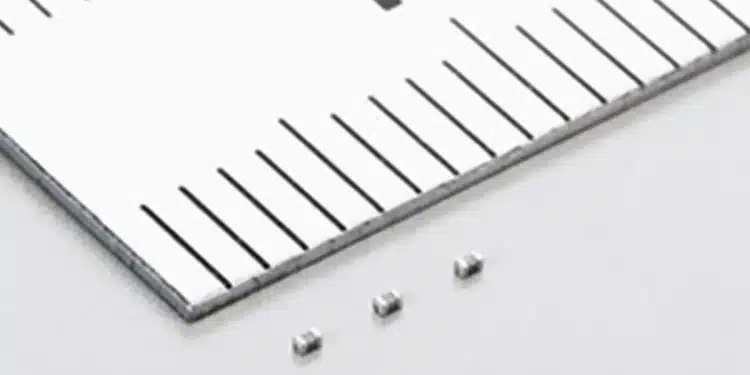Leading electronics manufacturer Murata continues to position itself at the forefront of passive technology. Through its latest MLCC multi-layer ceramic capacitor introduction of 10µF into 0201 MLCC Capacitor, the company is addressing the growing need for components that have elevated capacitance levels combined with miniaturized form factors and enhanced temperature performance.
Offering capacitance values of 10µF (and a ±20% tolerance), the GRM series of MLCCs are supplied in a 0201inch/0603M package size. They are currently the smallest MLCC products on the market to deliver such capacitance levels, representing a 65% size reduction on the 0402inch/1005M products that would normally need to be specified. Consequently, they enable use of substantially fewer components, leading to board space savings and bill-of-materials costs benefits.
The GRM series benefits from key Murata innovations, including the company’s proprietary thin layer forming technology, plus a fully optimized high-precision lamination process. The 4.0VDC-rated GRM035R60G106M products have a -55°C to 85°C temperature range and are already in production. Also, the GRM035C80E106M with a rated voltage of 2.5VDC at -55°C to 105°C goes into mass production this September, and the GRM035R60J106M with a rated voltage of 6.3VDC at -55°C to 85°C in 2024.
These MLCCs are highly suited for integration into the decoupling and smoothing circuitry of smartphone handsets, portable equipment, wearables, domestic appliances, servers, and IoT hardware.
“There are numerous market sectors where there is a definite need for capacitor components that have strong capacitance figures and also take up very little PCB footprint,” states Hidetoshi Nakagawa, General Manager of Ceramic Capacitor Marketing at Murata. “Furthermore, the miniaturization of capacitors will contribute to reducing the environmental impact of the electronics industry and help enable long-term sustainability, with the quantities of materials involved being lowered and the amount of electricity consumed during their production also being curbed.”
































